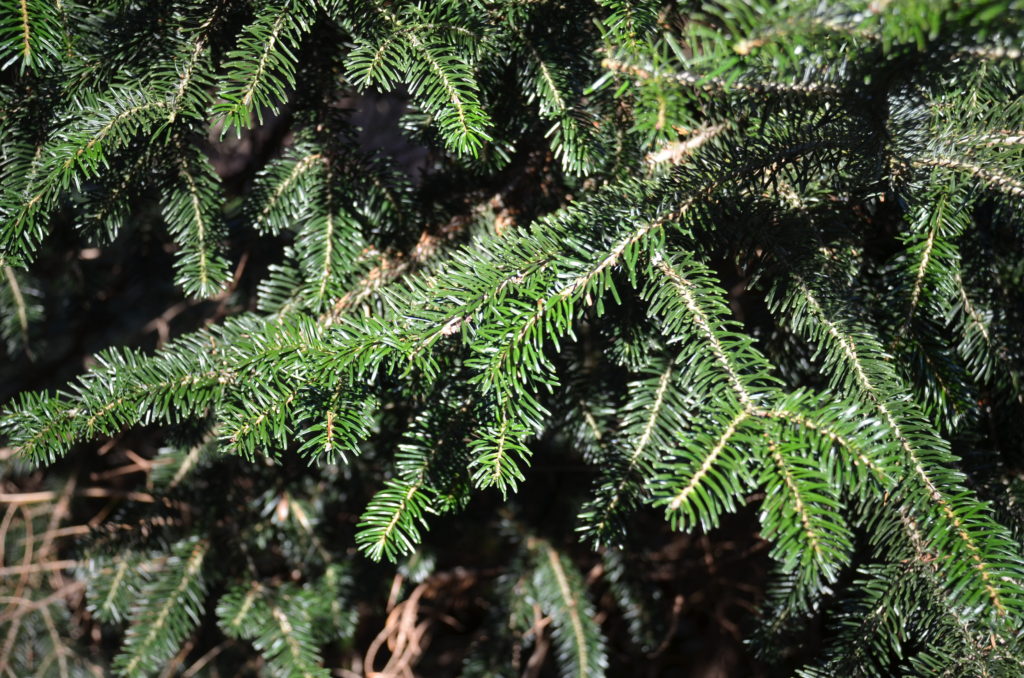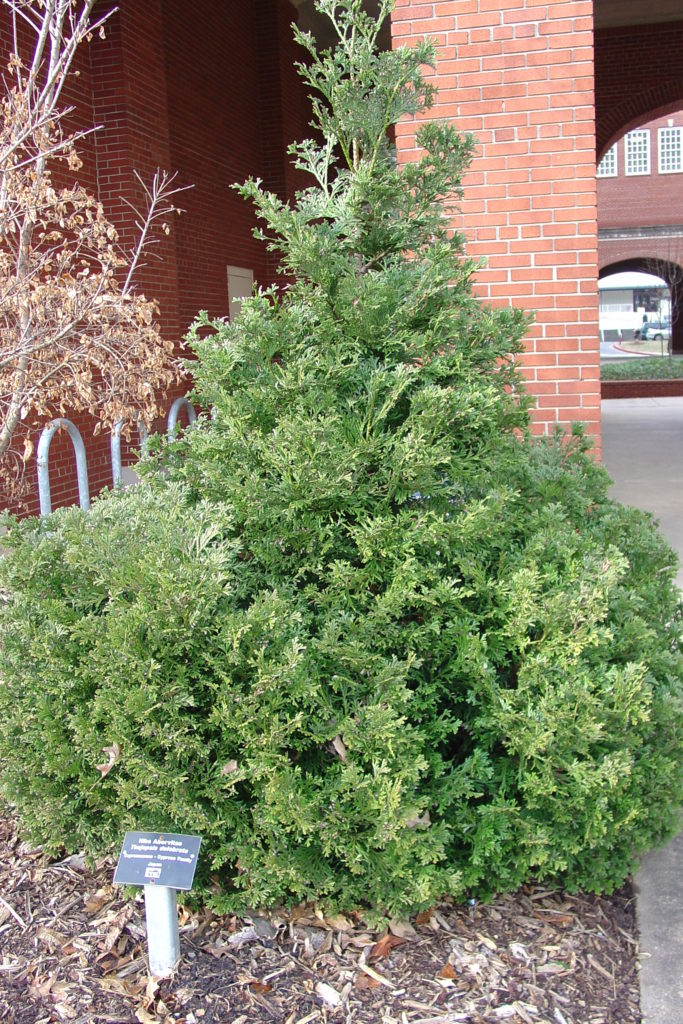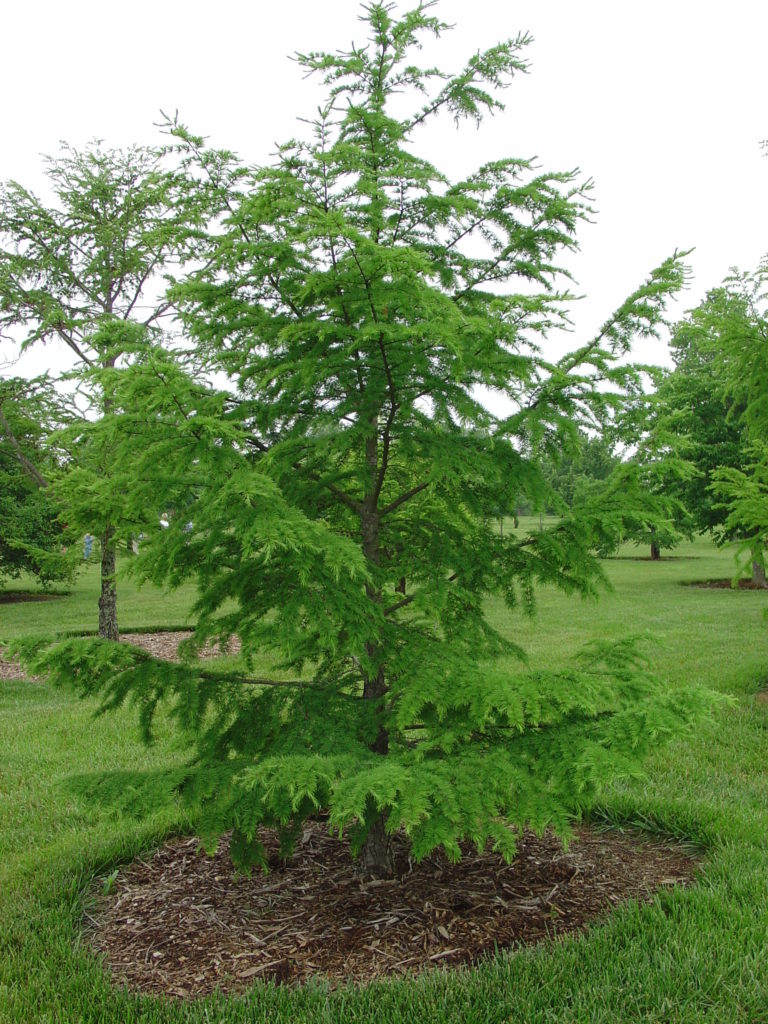Nordmann fir (Abies nordmanniana), aka Caucasian fir, is native to the Caucasus Mountains (USDA hardiness zones 4-6). This dense pyramidal conifer grows to 50 feet tall and 20 feet wide and are typically branched to the ground. Their flat dark green shiny needles (up to 1 ¼ inches long) feature two white bands on the underside. Bark is charcoal gray. Their upright cylindrical dark reddish-brown cones measure up to 6 inches long.

Best grown in rich, consistently moist, acidic, well-drained soils in full sun to part shade. Best in full sun. Trees grow poorly in heavy clay soils. Trees are native to cool climates, and are not recommended for planting in the hot and humid summer conditions south of USDA Zone 6.
Korean fir (Abies koreana) is a compact, conical to pyramidal evergreen conifer that slowly grows over time to as much as 50 feet tall. Korean fir is for the landscape in cool summer climates. It is native to the mountains of South Korea (USDA hardiness zones 5-7). Branches are densely clad with short but broad needles (to 3/4″ long) that are shiny dark green above and silver beneath. Purple cones (to 3″ long) are produced when the trees are quite young. As is distinctive with the firs, the cones appear upright on the branches.
No serious insect or disease problems. Occasional insect pests include balsam woolly adelgids, bark beetles, spruce budworms, aphids, bagworms and scale. Spider mites may occur in hot conditions. Trees are not tolerant of urban pollutants.
Hiba Arborvitae (Thujopsis dolabrata) is a conical needled evergreen native to Japan in the cypress family. The bright green densely packed needles provide color and winter interest in the garden. Plant in full sun to partial shade in moist, well-drained, neutral to alkaline soils. This tree does not tolerate dry soils. Its mature size is 30-50 feet tall x 15-30 feet wide. It produces tiny thick brown and violet with white wax ovoid seed cones.

‘Nana’ – aka dwarf Hiba Arborvitae, is a compact, mound-shaped evergreen shrub with shiny dark green foliage all season long and good form. It is a great evergreen accent for home gardens. The scale-like leaves remain dark green throughout the winter. Flowers or cones are not ornamentally significant.
Golden larch (Pseudolarix amabilis) is native to coastal mountain areas in southeastern China. Pseudolarix (means false larch) is an attractive large specimen tree with excellent needled foliage and fall color. This deciduous conifer tree grows 30-60 feet tall and is slow-growing and broadly-conical with horizontal branching and drooping branchlets. The soft green foliage turns golden yellow in fall before dropping. Needles (to 2.5” long) appear primarily in tuft-like clusters on spur-like short shoots. Cones (2.5 – 3 inches) stand erect reddish brown fruiting cones. Bark on mature trees is fissured and reddish-brown.

Golden larch thrives in moist, acidic, organically rich loam feet and in full sun. The tree is tolerant of light shade, but intolerant of full shade. Avoid limestone soils. Best sited in a location protected from strong winds. This tree may struggle summer weather is exceptionally hot and humid, but generally outperforms common larch (Larix decidua). It has no serious insect or disease problems.

 Posted in
Posted in 
